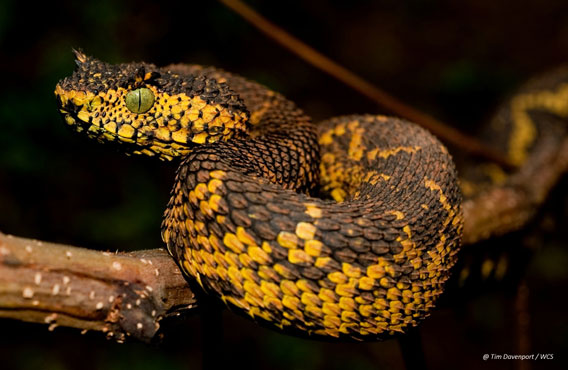
Matilda’s horned viper. Photo by: Tim Davenport.
In a remote forest fragment in Tanzania, scientists have made a remarkable discovery: a uniquely-colored horned viper extending over two feet long (643 millimeters) that evolved from its closest relative over two million years ago. Unfortunately, however, the new species—named Matilda’s horned viper (Atheris matildae)—survives in a small degraded habitat and is believed to be Critically Endangered. Given its scarcity, its discoverers are working to preempt an insidious threat to the new species.
Scientists love nothing more than finding unknown animals, but the public announcement has sometimes been the beginning of the species’ undoing, especially in the case of reptiles and amphibians. Hotly pursued by the black market pet trade, in the past new species have been helplessly decimated by collectors shortly after their scientific description is published. As such, Matilda’s horned viper’s discoverers are not only keeping the snake’s location a closely-guarded secret, but have already set up an emergency conservation program. They won’t let this species vanish without a fight.
“The global trade in wildlife is huge, and a very significant part of that is the illegal trade in wild-caught amphibians and reptiles, for the pet trade. Snakes are particularly popular and a new snake arouses considerable interest,” Tim Davenport with the Wildlife Conservation Society (WCS) explained to mongabay.com. “Our concern is that a sudden rush to collect this new snake from such a small forest would at best be unsustainable, and at worst have a major detrimental impact on the species’ survival. Illegal collection for the pet trade is a huge problem in Tanzania due in part to the high number of attractive and endemic species.”
To keep the new species safe, researchers collected eleven snakes for a captive breeding program: four males, five females, and two juveniles. The offspring of these snakes are meant to be an insurance against extinction. Along with keeping its exact location in the wild quiet, the conservationists are also going one step further to anticipate the illegal pet trade.
“We are planning to make available the first few dozen offspring from the captive population free of charge, in order to provide the market with captive-bred specimens of the new species. The aim is to avoid collection of wild caught specimens, lower the price of the animal and encourage responsible captive breeding by keepers in the most highly demanding countries,” explains Davenport. “The ultimate goal is also to raise awareness and support for a community-based forest conservation program. Matilda’s horned viper will, it is hoped, be a flagship species for this initiative.”
Their caution is not an overreaction. The researcher argue the species should be listed as Critically Endangered by the IUCN Red List given its tiny range: after extensive surveys the team believes the snake survives in an area smaller than 100 square kilometers.
“In addition, the habitat quality is in decline,” Davenport adds.
Matilda’s horned viper’s closest relative is the forest horned viper (Atheris ceratophora), but Matilda’s is larger, sports different coloration, and has a unique scale pattern on its head (see more photos below). Genetic testing shows the snakes to be separated by 2.2 million years.
“We would like this discovery to contribute to the conservation of the species and its habitat, not to a more rapid demise of the species in the wild,” Davenport says. He and his colleagues also recommend other researchers follow similar paths in announcing new species.
“All three of us [Davenport, Michele Menegon, and Kim Howell] have described new species only to see these same species being illegally and unsustainably harvested just months later. We are not objecting to the pet trade, but we do believe that in most cases there is no justification at all for wild caught animals being collected. The problem is exacerbated by the huge numbers collected from the wild, only a small fraction of which live to reach their ultimate destination. There needs to be far tighter management of the pet trade or else many species will simply be extirpated in the wild by the trade.”
Matilda’s horned viper received its name from a five-year-old girl, Davenport’s daughter.
“When we first discovered the snake, we kept one securely in a tank outside the office while we studied it. My daughter, then five years old, was fascinated and always insisted on helping us feed it and look after it. It became known as Matilda’s viper and the name stuck. We simply added the ‘horned’ later. She is very pleased but of course her younger sister wants a species now too! We will see what we can do…”
For more information on the discovery: Matilda’s horned viper.
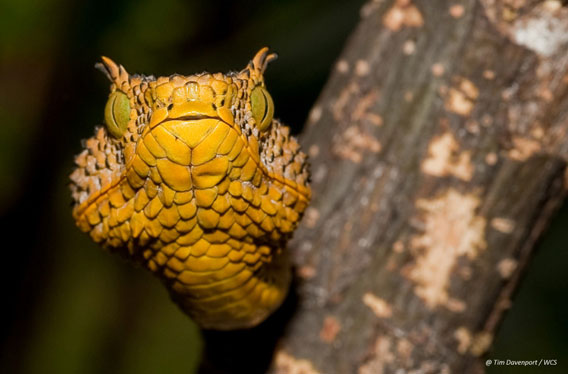
Close-up Matilda’s horned viper. Photo by: Tim Davenport.
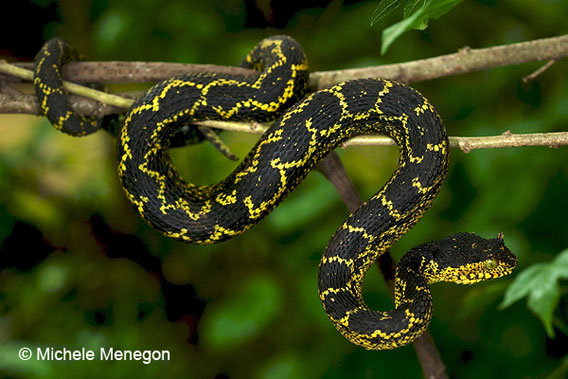
Matilda’s horned viper. Photo by: Michele Menegon.
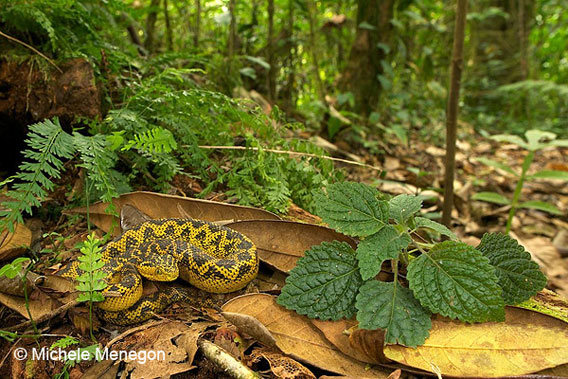
Matilda’s horned viper. Photo by: Michele Menegon.
CITATION: Michele Menegon, Tim Davenport, Kim Howell. Description of a new and critically endangered species of Atheris
(Serpentes: Viperidae) from the Southern Highlands of Tanzania,
with an overview of the country’s tree viper fauna. Zootaxa. 3120: 43–54 (2011).
Related articles
Photos: 208 species discovered in endangered Mekong region in 2010
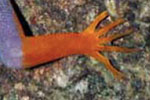
(12/14/2011) Last year researchers scoured forests, rivers, wetlands, and islands in the vanishing ecosystems of the Mekong Delta to uncover an astounding 208 new species over a twelve month period. A new report by the World Wide Fund for Nature (WWF) highlights a number of the new species—from a new snub-nosed monkey to five new meat-eating pitcher plants to a an all-female, cloning lizard—while warning that many of them may soon be gone as the Mekong Delta suffers widespread deforestation, over-hunting and poaching, massive development projects, the destruction of mangroves, pollution, climate change, and a growing population.
New species of frog sings like a bird
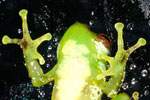
(12/12/2011) If you’re trudging through the high-altitude rainforests of northern Vietnam and you hear bird song, you might want to check the trees for frogs. Yes, that’s right: frogs. A new species of tree frog has been discovered in Vietnam that researchers say has a uniquely complex call that makes it sound more like a bird than a typical frog. Discovered in Pu Hoat Proposed Nature Reserve, the new species, dubbed Quang’s tree frog (Gracixalus quangi), dwells in the forests at an altitude 600-1,300 meters (nearly 2,000-4,265 feet).
Photos: two new paper clip-sized frogs discovered in Vietnamese mountains

(12/07/2011) Researchers have discovered two new frog species living in the montane tropical forests of Vietnam. Known as moss frogs, these small amphibians employ camouflage as one way to keep predators at bay, in some cases resembling the moss that gives them their name.